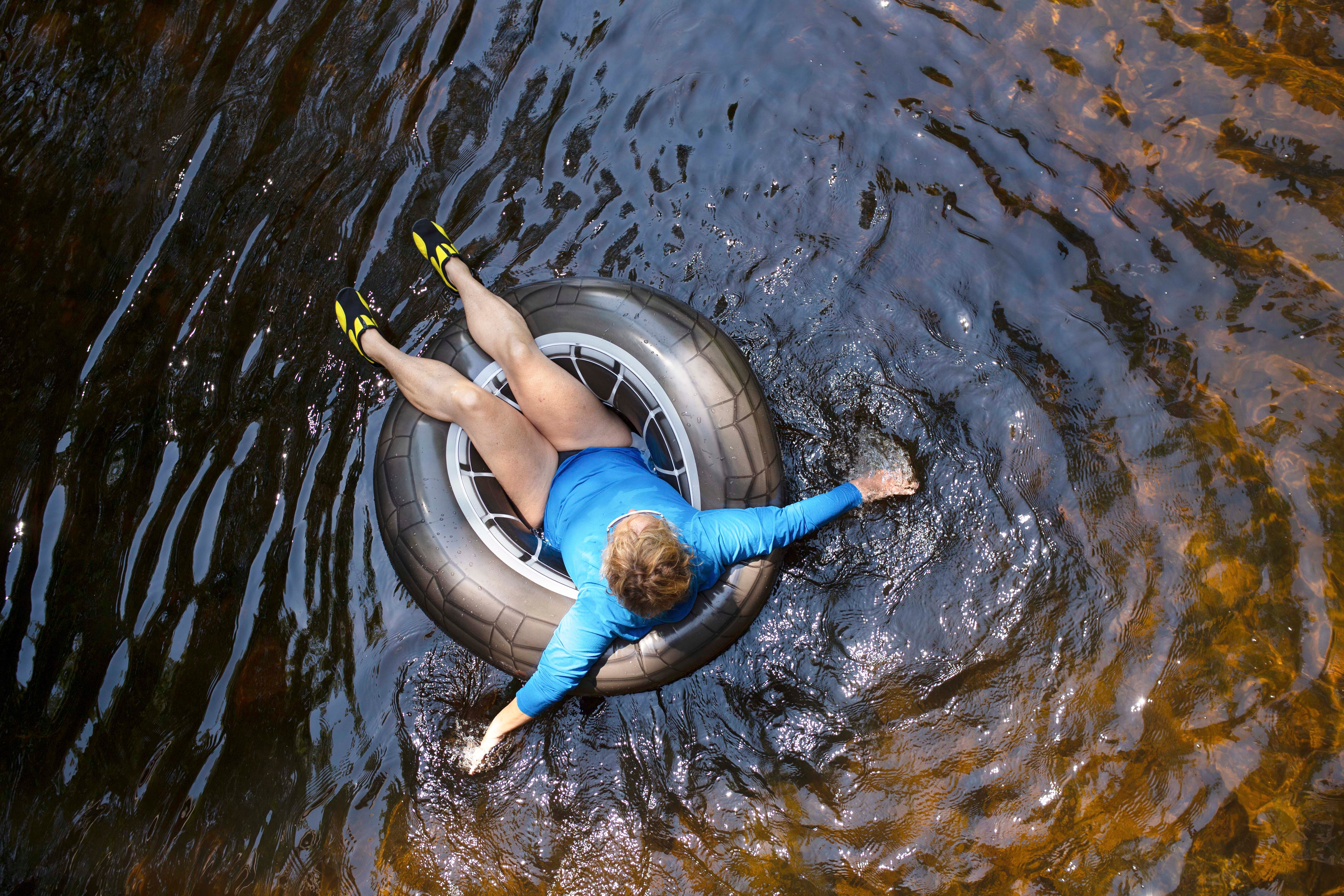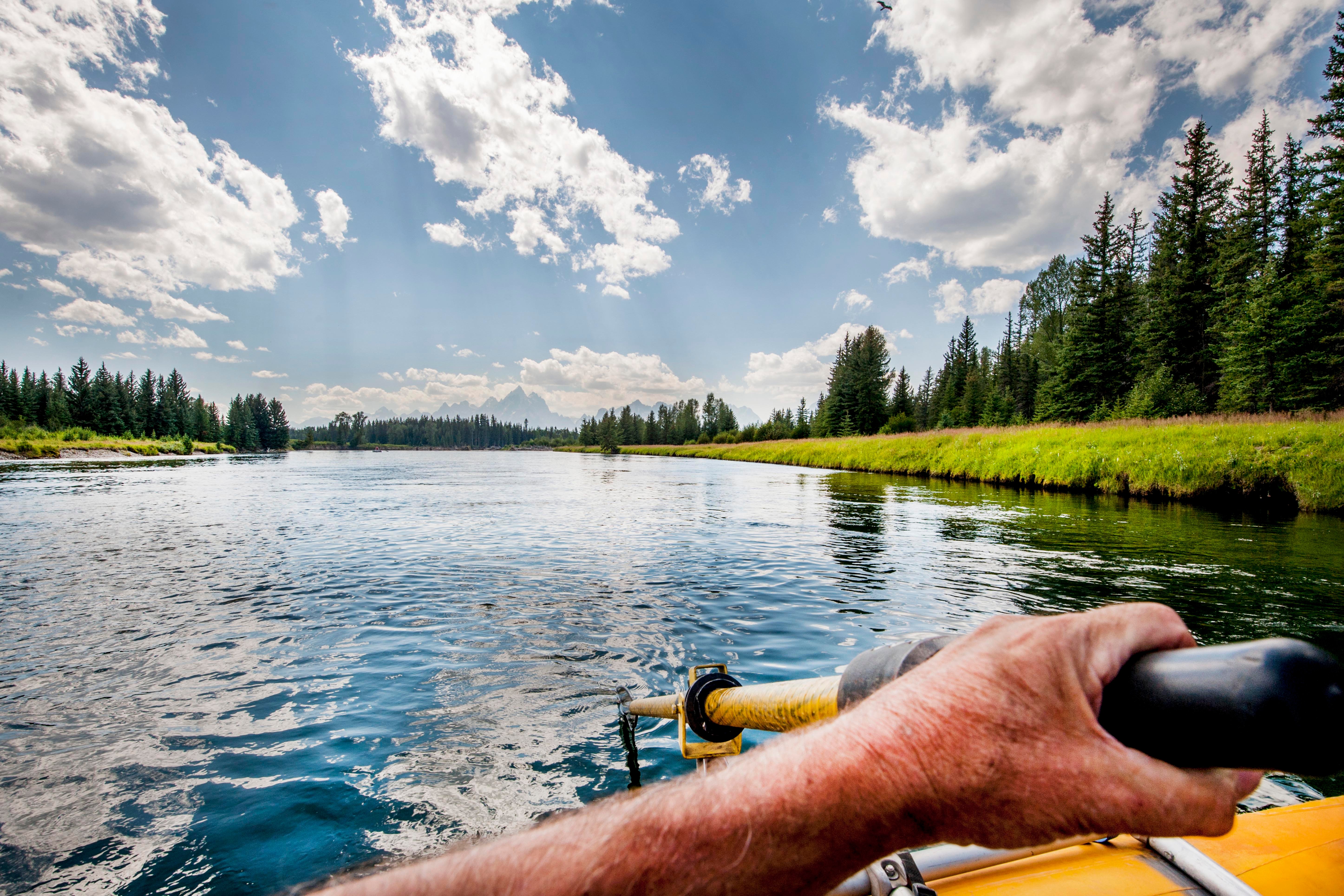Guide to Floating the Rivers Around Bozeman

When it comes to floating the rivers around Bozeman, there are plenty of options. From guided fly fishing and whitewater rafting, to kayaking or canoeing, each river showcases different features at different points, but one thing they all have in common is breathtaking experiences.
You can hire a guide for most river activities. If you’re new to the area, even going out for a half-day will give you the lay of the land and set you on your way. In general, fishing before and after the spring runoff can be great, but you’ll need to pay close attention to the weather as a warming period can cause quick snowmelt and muddy the rivers.
If you’re a kayaker or whitewater rafter, runoff is your friend. Spring brings fast, high water and extra adrenaline rushes on rivers such as the Gallatin. And if you're simply hopping on an innertube to float for leisure, White Claw in hand, slow and easy water is the way to go.
Here are four of the nearby rivers around Bozeman and the best ways to enjoy them.
Madison River
Beginning in Yellowstone National Park at the confluence of the Firehole and Gibbon River, the Madison flows out of the park, through West Yellowstone and on to Hebgen and Quake Lakes. From there, it’s a meandering trip to the town of Ennis and Ennis Lake. The fishing here is superb and the views are just as thrilling. Underneath the dam, it turns to a whitewater adventure near Bear Trap Canyon. Once you leave the canyon, the fishing gets good again, although it is best done in the spring or fall when there are fewer people and the water levels are higher and cooler. During the heat of summer, recreational floaters fill the river in what locals affectionately call the “bikini float.” Start to end, the Madison flows 140 miles.

Gallatin River
Starting at Gallatin Lake in the Gallatin Range in Yellowstone National Park, the river flows 115 miles to the Missouri River. Much of the land outside of the Park is public land, making access to this scenic river easy. The majority of the Gallatin River is closed to float fishing, but open to recreational floating and some incredible whitewater. Once you are out of the canyon, the river meets up with the East Fork Gallatin. From here until it joins to form the Missouri River, you can fish from a boat.
Jefferson River
The Jefferson River, which begins near Twin Bridges and flows 80 miles to the Missouri, is less frequently fished or floated. The water is warmer and slower, with some deepwater pockets. Fishing isn’t as popular on this river, although there are some nicely sized brown trout. The scenery is gorgeous and the pace is slow, making it a beautiful float in a canoe, inflatable canoe or flatwater inflatable kayak since the low flow requires frequent paddling.

Yellowstone River
The longest river in Montana at 692 miles, the Yellowstone is also one of the longest free-flowing rivers in the United States. Just outside the park, whitewater rafting and floating parties enjoy the section through Yankee Jim Canyon. From there, the meandering river flows through Paradise Valley and provides incredible fishing and jaw-dropping views. The pace and fishing continues on like this through Livingston and to Big Timber. If you’re looking for a leisurely float, outfitters can take you on a short, relaxing float through town.
Keep in mind that all rivers have some level of danger. If you are going out on your own, check with a local guide shop for conditions and watch the weather. Bring waterproof layers, sun protection and food and snacks. Always wear a life preserver, and don’t forget your fishing license!
If you enjoyed this blog, take a look at some of our other related articles at Bozemancvb.com.
- A Guide to In-Town Exploration in Bozeman
- Camping Around Bozeman: RV Edition
- The Ultimate Bozeman Summer Adventure Day
- Top Ten Hiking Trails Close to Bozeman, Montana
In our never-ending quest to keep up with all things new in Bozeman, we have been producing content for years and can't possibly update every blog when new businesses open or existing businesses close. Please reference the publish date and do your own due diligence when making plans.


